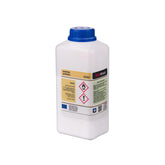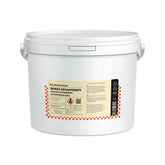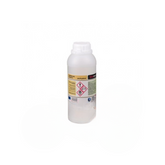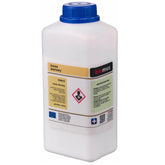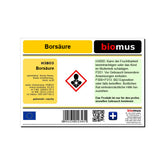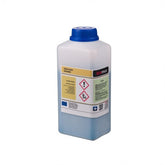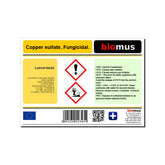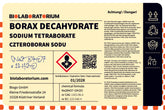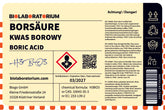Gelbdextrin - Versatile Helper in Industry and Laboratory
Yellow dextrin is a fascinating molecule that plays an important role in a wide range of industrial sectors and laboratories. As a natural polymer from starch hydrolysis, it possesses unique properties that make it a valuable material. In this blog post, we will take a closer look at the chemistry, production, and technical applications of yellow dextrin.
The chemistry of yellow dextrin
Yellow dextrin is a polysaccharide produced by the partial hydrolysis of starch. In this process, the long amylose and amylopectin chains are broken down into shorter fragments. The result is a mixture of oligosaccharides with different chain lengths, referred to as yellow dextrin.
The exact chemical composition of yellow dextrin can vary but depends primarily on the manufacturing process. Typically, it consists of 60-90% maltodextrins, i.e., oligosaccharides with 3-20 glucose units. The remainder consists of monosaccharides such as glucose and longer polysaccharides.
Due to this mixture of molecules with different chain lengths, yellow dextrin exhibits a number of interesting properties that make it suitable for many applications:
- Good solubility in water and other polar solvents
- Viscosity-increasing effect in solutions
- Ability to bind water and regulate moisture
- Low sweetness compared to sucrose
- Thermal stability up to temperatures of 200°C
Industrial applications of yellow dextrin
The versatile properties of yellow dextrin make it a valuable auxiliary agent in numerous industries:
Adhesives and binders
Due to its good solubility and viscosity-increasing properties, yellow dextrin is often used as a binder in adhesives, pastes, and coatings. It improves the adhesion and consistency of these products.
Food industry
In food processing, yellow dextrin finds diverse applications as a thickening agent, stabilizer, humectant, or filler. It is used, for example, in sauces, puddings, baked goods, or confectionery.
Paper and textile industry
Yellow dextrin serves as a coating agent in the paper and textile industry to smooth, stiffen, or waterproof surfaces. It also plays an important role as an auxiliary in dyeing and printing.
Chemical industry
In the chemical industry, yellow dextrin is used, among other things, as an emulsifier, dispersing aid, or carrier for active ingredients. It is also frequently used in adhesives, paints, and dyes.
Pharmacy and cosmetics
Due to its biocompatibility and tolerability, yellow dextrin is used as an excipient in pharmaceuticals, dietary supplements, and cosmetic products. It serves here, for example, as a filler, binder, or humectant.
Pyrotechnics
A rather unexpected application of yellow dextrin is its use in pyrotechnic articles such as fireworks. Here, the material's thermal stability and slow burn rate are utilized.
Production of yellow dextrin
The industrial production of yellow dextrin is carried out through controlled hydrolysis of starch. Various methods are used for this:
Acid hydrolysis
In acid hydrolysis, starch is heated in a dilute acid solution (e.g., hydrochloric acid or sulfuric acid). The acid cleaves the glycosidic bonds of the starch molecules, resulting in oligosaccharides.
Enzymatic hydrolysis
Alternatively, starch can also be treated with enzymes such as α-amylase or glucoamylase. These biocatalysts break down the starch chains in a controlled manner without the use of aggressive chemicals.
Thermal hydrolysis
In thermal hydrolysis, starch is hydrolyzed without the addition of acids or enzymes at high temperatures (over 100°C). The degradation occurs solely through the action of heat and pressure.
Depending on the degree of hydrolysis and processing methods, yellow dextrins with different properties such as viscosity, sweetness, or molecular weight distribution are obtained in the end. These can then be specifically selected for the respective application.
Conclusion
Yellow dextrin is a fascinating and versatile natural product that plays an important role in numerous industrial sectors. Its unique chemical properties make it a valuable auxiliary substance in adhesives, foods, cosmetics, and many other applications. Through targeted manufacturing processes, yellow dextrin can also be adapted to specific requirements. No wonder then that this polysaccharide is indispensable in modern industry!
